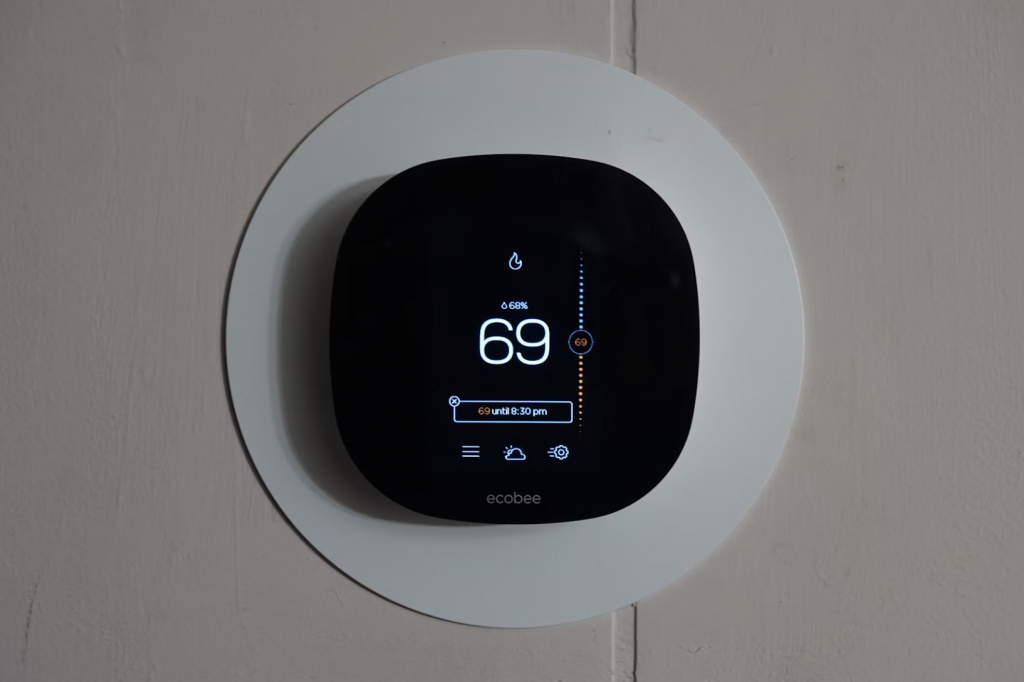Introduction: Why Smart Thermostats Matter
Let’s face it: energy bills are never welcome surprises. Whether you’re cranking up the heat in winter or blasting the AC during a heatwave, energy costs can skyrocket. That’s where smart thermostats come in—tiny devices with powerful tech that help you take control of your energy consumption, without sacrificing comfort.

How Smart Thermostats Work
These aren’t your old-school, turn-the-dial devices. Smart thermostats are designed to learn your habits, track your usage, and adjust settings for optimal efficiency.
The Role of Machine Learning
Smart thermostats use algorithms to study your daily routine. Over time, they anticipate when you’re home, away, or asleep and adjust temperatures automatically.
Sensors and Connectivity
Motion sensors detect presence and inactivity, while Wi-Fi and Bluetooth allow you to connect remotely via a mobile app. Some even use geofencing to prepare your home climate based on your phone’s location.
Key Benefits of Using a Smart Thermostat
Real-Time Energy Monitoring
Most smart thermostats show real-time data on energy consumption, giving you insights and helping identify wasteful habits.
Remote Control & Scheduling
Heading home early or staying late at work? You can adjust your home temperature from your phone, tablet, or even smart speaker.
Personalized Climate Control
Set different temperatures for different rooms (if your HVAC supports zoning), or create specific schedules based on your lifestyle.
What to Look for in an Affordable Smart Thermostat
Compatibility with HVAC Systems
Before you buy, double-check if the thermostat supports your heating and cooling system. Most support standard systems, but older setups may need additional adapters.
Ease of Installation and Use
Look for models that offer clear instructions and intuitive interfaces. Some even walk you through setup via a mobile app.
Integration with Smart Home Ecosystems
Want to say, “Alexa, turn down the heat”? Choose a thermostat that supports voice assistants like Alexa, Google Assistant, or Apple HomeKit.
Top Affordable Smart Thermostats on the Market
Google Nest Thermostat (Budget Edition)
At around $129, it offers smart scheduling, remote control, and energy-saving features. Plus, it’s backed by Google’s robust support system.
Amazon Smart Thermostat
Priced under $80, this thermostat is one of the most budget-friendly options. It integrates seamlessly with Alexa and offers ENERGY STAR certification.
Wyze Smart Thermostat
Wyze delivers tremendous value at under $75. It features remote access, daily reports, and works well with both Google Assistant and Alexa.
Emerson Sensi Touch Smart Thermostat
This unit, typically around $130, stands out for its intuitive touchscreen and wide HVAC compatibility. It also offers geofencing and usage reports.
Mysa Smart Thermostat for Electric Baseboards
For homes with electric heating, Mysa is a rare gem. It’s a bit pricier (around $139), but it’s efficient, sleek, and supports detailed scheduling.
Energy Savings: What the Data Says
Case Studies and Consumer Reports
According to the U.S. Department of Energy, you can save up to 10 percent a year by adjusting your thermostat 7-10 degrees for eight hours a day. Smart thermostats do this automatically.
ROI and Payback Timeframes
On average, users report a return on investment within 12 to 24 months. Combine that with utility rebates, and the timeline shortens even more.
Installation: DIY or Professional Help?
Tools You Might Need
Typically, a screwdriver, level, and your smartphone are all you need. Most models come with labeled wiring stickers to avoid confusion.
Typical Installation Time
Expect about 30 to 60 minutes for most DIY installations. If your system is complex, hiring a pro could be worth it to avoid costly mistakes.
Smart Thermostat Myths Debunked
“They’re Too Expensive”
This myth is outdated. Many smart thermostats are now priced under $100. Considering the energy savings, they pay for themselves quickly.
“They Don’t Really Save Money”
Studies from independent organizations like ENERGY STAR and Consumer Reports confirm consistent annual savings of 8 to 15 percent on energy bills.
Are Rebates and Incentives Available?
Yes! Many energy companies and state governments offer rebates ranging from $50 to $150 for purchasing ENERGY STAR-certified smart thermostats. Check with your local provider or visit websites like Energy.gov.
Maintenance and Software Updates
One of the great things about smart thermostats is that they get smarter. Manufacturers frequently release firmware updates that improve efficiency, add features, or fix bugs. Make sure your device is connected to Wi-Fi so it stays updated.
Conclusion: Making the Smart Switch
Investing in a smart thermostat is one of the simplest and most effective ways to reduce your energy costs. It’s a small upfront cost with long-term benefits—financially and environmentally. Whether you live in a cozy apartment or a multi-zone home, there’s an affordable smart thermostat that fits your lifestyle. Stop letting your old thermostat drain your wallet, and switch to something that actually works for you.
FAQs
1. Can I use a smart thermostat if I rent my apartment?
Yes! Many models are renter-friendly and don’t require drilling. Just check with your landlord and ensure your HVAC system is compatible.
2. Do smart thermostats work without Wi-Fi?
They work, but with limited functionality. You won’t be able to control them remotely or receive updates until connected again.
3. How much can I really save per year with a smart thermostat?
Most users report saving between 8 to 15 percent annually on heating and cooling costs, depending on their climate and usage patterns.
4. Is it hard to install a smart thermostat myself?
Not at all! Most affordable models come with detailed instructions or video walkthroughs. If you’re comfortable with basic tools, DIY is totally doable.
5. Will a smart thermostat work with radiant floor heating or boilers?
Some models like Mysa or ecobee offer support for these systems, but always double-check the product specifications before purchasing.

